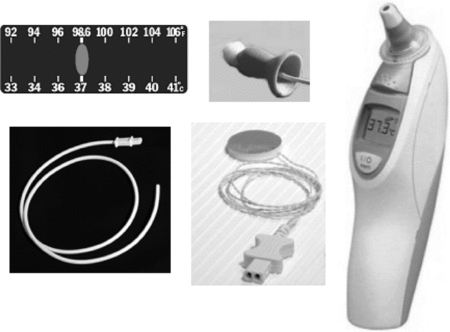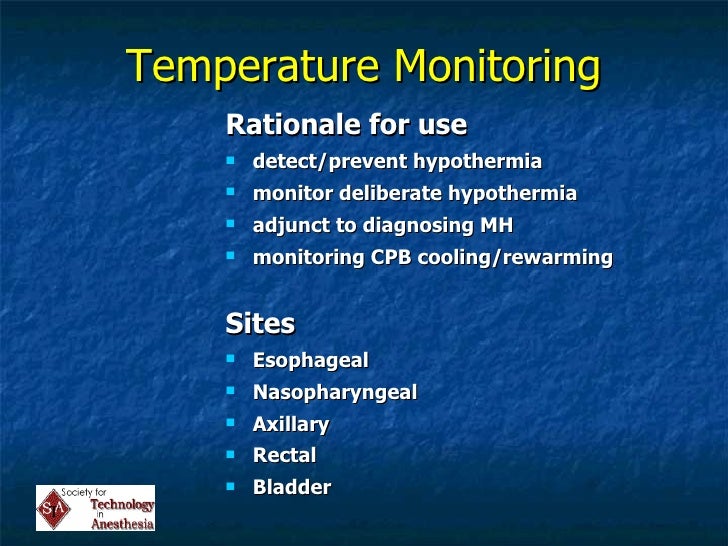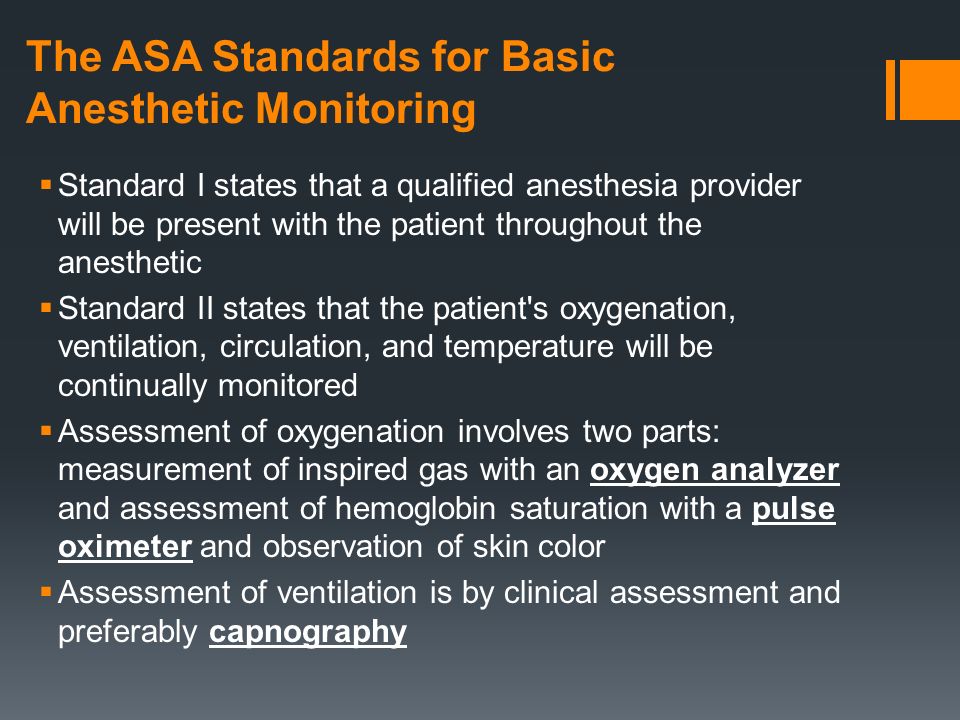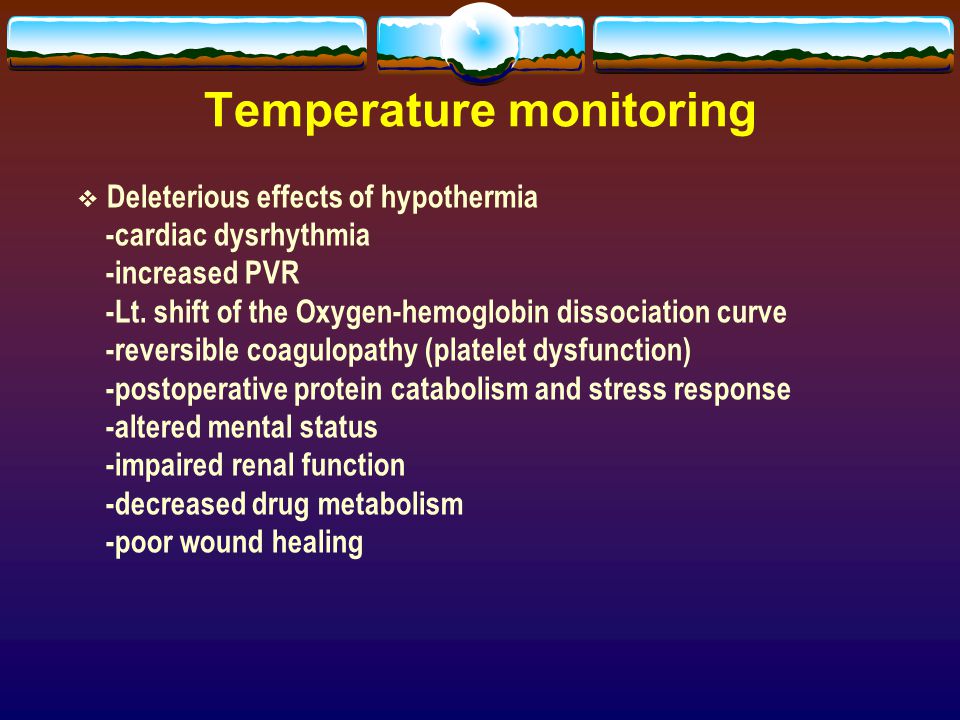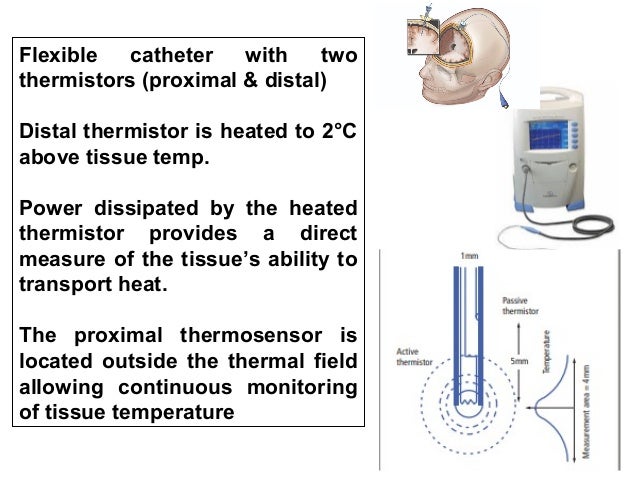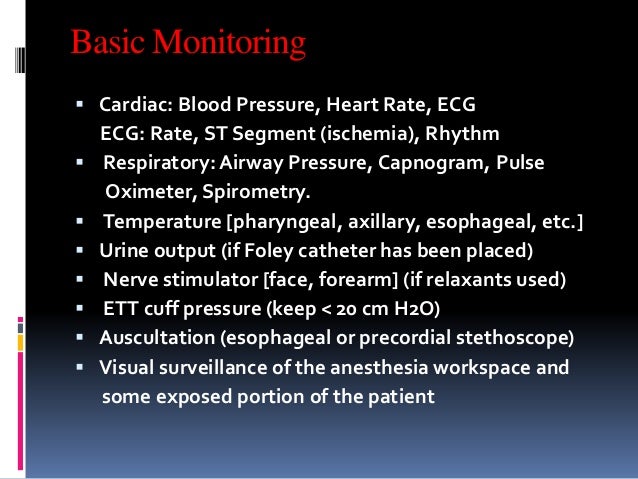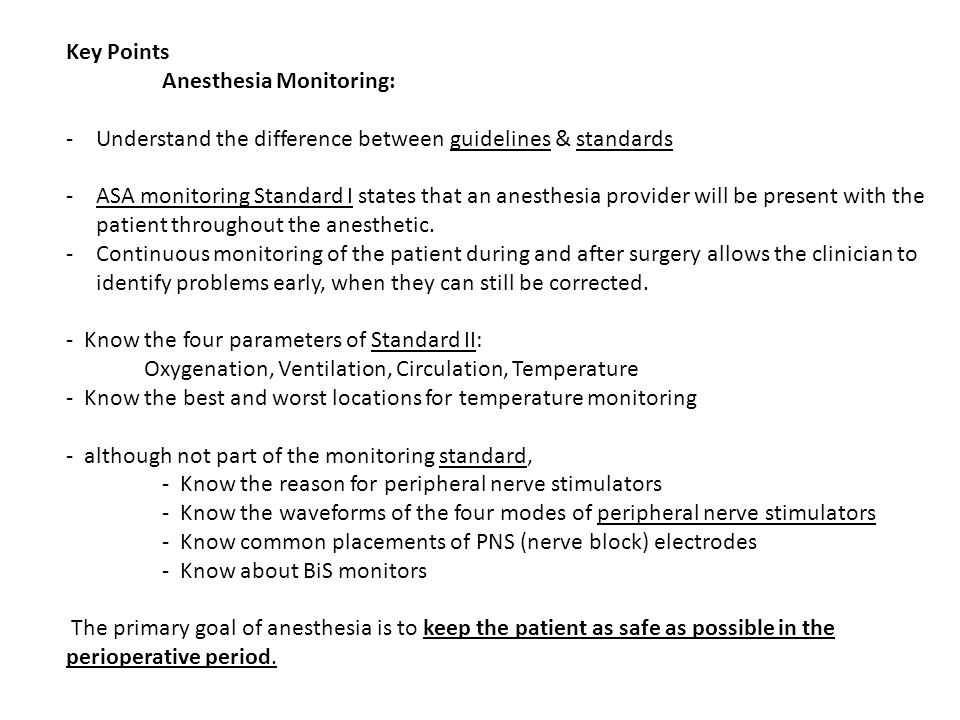Specialized monitors for obtaining more detailed and complicated information mostly about the heart can also be used when useful or needed for certain types of surgeries.
Temperature monitoring devices in anaesthesia.
In addition temperature monitoring should be done on nearly every unconscious patient because of the rapid changes in temperature that can occur under anesthesia.
Monitoring body temperature in order to prevent hypothermia and hyperthermia is vital.
Temperature monitoring devices are relatively inexpensive.
Core temperature monitoring e g.
Mild hypothermia can delay recovery from anesthesia.
Probes can be placed in the axilla in the pharynx or in the esophagus and indicate at the least temperature trending.
4 2 3 every patient receiving general anesthesia shall have in addition to the above circulatory function continually evaluated by at least one of the following.
Palpation of a pulse auscultation of heart sounds monitoring of a tracing of intra arterial pressure ultrasound peripheral pulse monitoring or pulse plethysmography or oximetry.
Tympanic membrane pulmonary artery distal esophagus nasopharynx is used to monitor intraoperative hypothermia prevent overheating and facilitate detection of malignant hyperthermia because these sites are not necessarily available or convenient a variety of near core sites are also used clinically.
Body temperature should be monitored perioperatively every 5 to 10 minutes until the patient has recovered to sternal recumbency and body temperature is maintained between 99 f to 102 f.
If a polychromatic infrared detector is used 7 13 um the monitor can automatically detect the anesthetic agent used as the absorption spectra at these wavelengths are relatively different.




